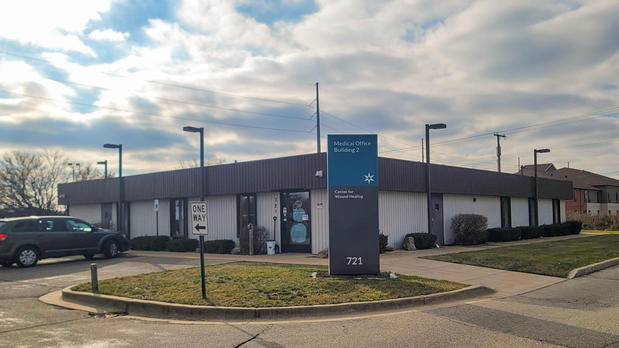Services and Procedures
Because wounds have varying causes and differ in severity, our specialists customize treatment based on your unique history. Generally, treatments aim to achieve one or more of the following:
- Keep temperatures consistent
- Allow/improve oxygen flow
- Protect the wound site from infection
- Remove dead tissue
- Ease pain and discomfort
Our approach is focused on rapid healing while also addressing underlying wound causes. You can expect customized evaluation and treatment followed by education, including nutrition and exercise counseling to minimize the chance of recurrence.
Types of Treatment
Debridement
Wounds often accumulate dead tissue and foreign matter. Debridement is the process of removing such tissue from your wound to encourage new tissue growth and faster healing. Tissue removal also reduces risk of infection since dead tissue can trap bacteria. Debridement treatments range from special dressings and ointments to surgery.
Edema control/compression therapy
Inflammation and swelling is your body’s way of protecting your wound against infection. However, it can cause tissue damage if it persists too long. Compression wraps can reduce and control swelling around and near your wound. Our specialists determine the type of wrap that is best for your wound.
Electrical stimulation
Some wounds are appropriate for electrical stimulation, which emits small electrical pulses directly to the wound area. The pulses stimulate tissue and the development of new blood vessels, speeding up healing and decreasing infection risk.
Hyperbaric oxygen (HBO) therapy
This leading-edge treatment enhances your body’s natural healing and strengthens your immune system. Delivered by trained specialists, HBO increases the amount of oxygen in your blood, allowing oxygen to pass more easily through plasma and into wounds. HBO therapy is an effective treatment option for most chronic wounds and other conditions such as diabetes, bone infections, radiation injuries and more. Our state-of-the-art hyperbaric chambers are built with your comfort in mind.
Negative-pressure wound therapy
Negative pressure wound therapy is a vacuum pump system used to treat acute and chronic wounds. A vacuum source creates continuous or intermittent negative pressure inside the wound to remove fluid, cellular debris and infectious materials to better prepare the wound for healing and closure.
Pulsatile irrigation
Wound irrigation is the steady flow of a solution across an open wound surface to achieve hydration, remove deep debris and bacteria, and to assist with examination. Methods vary in both pressure and irrigation solution. High pressure pulsatile jet irrigation has been shown to be an effective method of wound irrigation.
Total contact casting
This therapy is especially beneficial for diabetic patients. The technique uses a thin cast applied to the entire underside of the foot, as well as the lower leg. It works with your natural gait (walk/stride) to reduce pressure on the foot and lower-leg ulcers. Since it does not interfere with your normal walking pattern, no other areas of your foot or leg take on additional weight or pressure.
Ultrasound therapy
Low-frequency sound waves delivered to skin tissue can improve outcomes for some patients. This treatment penetrates into and below your wound bed to reach otherwise inaccessible tissue. Ultrasound energy can produce a wide range of benefits including bacteria reduction, through the disruption of bacterial membrane, which then causes cell death.
A physician referral for wound care services is required.



